Thermal control is essential for your astrophotography camera because heat generates unwanted noise that masks faint celestial details. As your sensor warms, it produces dark current (approximately 0.14 e-/pixel/s at 30°C), creating fixed pattern noise that degrades image quality. Cooled cameras using Peltier technology can maintain sensors at 30-40°C below ambient temperature, dramatically reducing thermal noise and improving signal-to-noise ratios. Proper cooling also allows you to reuse dark frames consistently, streamlining your workflow while capturing clearer, more detailed cosmic vistas.
5 Second-Level Headings for “Why Your Astrophotography Camera Needs Thermal Control”
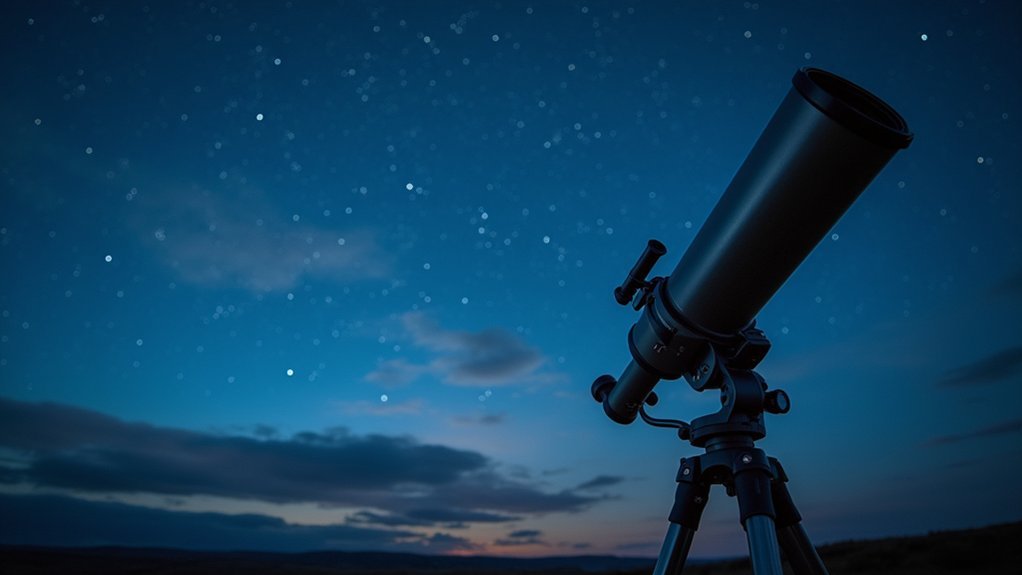
When planning your astrophotography setup, thermal control should be a top priority rather than an afterthought. The ability to dissipate heat effectively makes a substantial difference in your final images’ quality.
Cooled cameras with Peltier technology maintain sensors at -30 to -40°C below ambient temperatures, dramatically reducing thermal noise compared to uncooled cameras.
This thermal management directly impacts your workflow efficiency. With properly cooled equipment, you’ll spend less time managing dark frames and more time imaging, as calibration frames remain usable across multiple sessions.
The benefits become particularly evident during summer months when uncooled cameras struggle with elevated dark current levels.
Your investment in thermal control pays dividends through cleaner images with better signal-to-noise ratios, allowing you to capture fainter celestial details that would otherwise be lost in thermal noise.
The Physics of Sensor Heat and Image Degradation
While staring at the vastness of space through your camera, a silent battle unfolds at the microscopic level of your sensor. Thermal noise, your primary enemy, results from spontaneous electron generation that increases with temperature. Your uncooled camera produces approximately 0.14 e-/pixel/s of dark current at 30°C, creating unwanted signal that accumulates during long exposures.
This thermal interference manifests as fixed pattern noise that masks the faint details you’re trying to capture. The problem worsens in darker skies and warmer conditions, where even slight noise becomes prominent against the cosmic backdrop.
Cooled cameras combat this issue by employing Peltier technology to reduce sensor temperatures by 30-40°C below ambient. This dramatically decreases dark current and preserves image integrity during those critical long exposures essential for deep-sky photography.
Comparing Performance: Cooled vs. Uncooled Systems
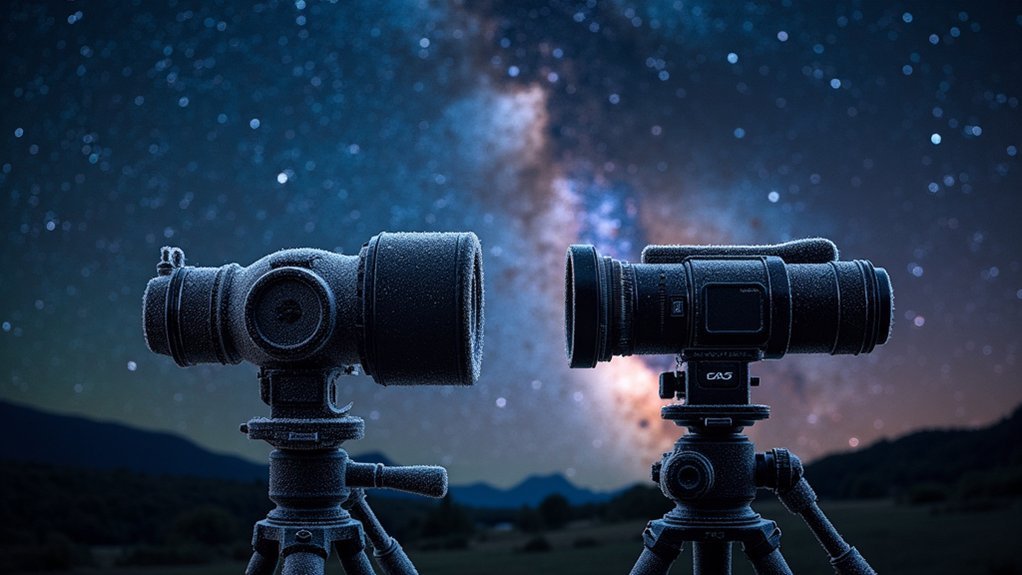
The battle against thermal noise takes center stage when evaluating astrophotography camera systems. In comparative tests, cooled cameras consistently outperform their uncooled counterparts by maintaining sensors at -30 to -40 degrees Celsius, well below ambient temperature.
Your uncooled system, like the Touptec IMX571, generates approximately 0.14 e-/pixel/s of dark current at 30°C, considerably degrading image quality, especially during warmer months.
You’ll also face the tedious process of matching dark frames to constantly changing ambient temperatures.
Conversely, cooled cameras provide consistent, reusable dark frames and clearer images with substantially reduced thermal noise.
Even seemingly small improvements in signal-to-noise ratio can dramatically enhance your final results. For serious astrophotographers, these benefits often justify the investment in regulated cooling technology.
Budget-Friendly Peltier Cooling Implementation
Despite their premium pricing, cooled camera benefits aren’t out of reach for budget-conscious astrophotographers. You can implement Peltier cooling systems to your existing setup at a fraction of the cost of upgrading to a fully cooled camera.
These affordable cooling solutions can lower your sensor temperature by 30-40°C below ambient, dramatically reducing thermal noise in your images. By stabilizing temperatures, you’ll achieve more precise dark frames for better calibration, ultimately enhancing overall image quality.
The real advantage becomes apparent during warmer months when thermal noise typically plagues uncooled cameras. With Peltier cooling, you’ll extend your camera’s capability for longer exposures, improving signal-to-noise ratios considerably.
Just pair your cooling system with appropriate heatsinks and fans to maximize efficiency while keeping costs manageable.
Optimizing Dark Frame Calibration Through Temperature Control
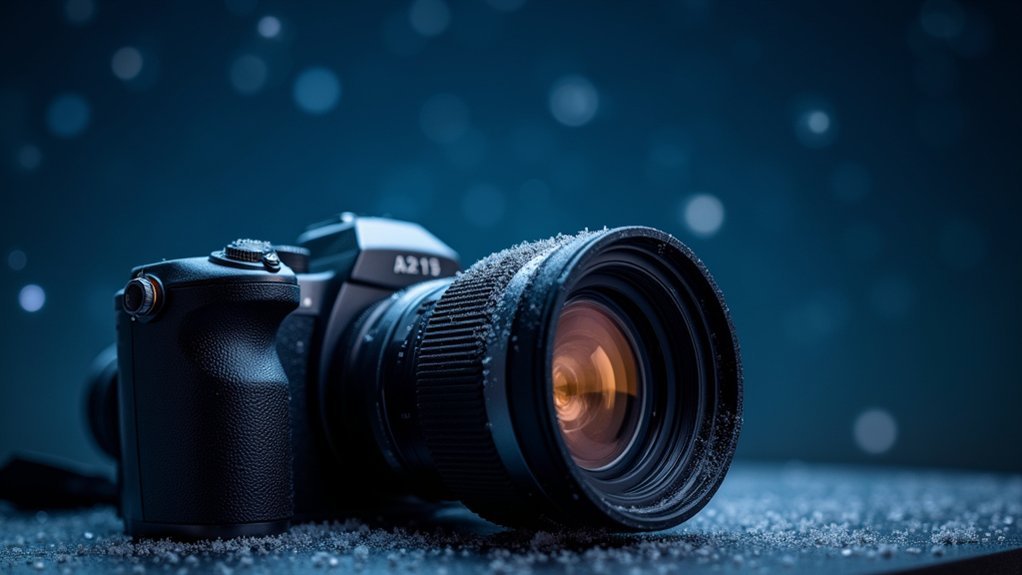
Temperature control directly impacts how effectively your dark frames calibrate your images. When your camera maintains consistent temperature through cooling, you’ll achieve more reliable calibration results compared to uncooled setups.
The IMX571 sensor generates approximately 0.14 e-/pixel/s of dark current at 30°C, which accumulates considerably during longer exposures.
During warmer months, thermal noise becomes particularly problematic as heat generates unwanted electrons that degrade image quality. With proper temperature control, you can reuse dark frames over extended periods without extensive sorting, simplifying your workflow.
Additionally, cooled cameras allow for longer dark exposures, enhancing calibration outcomes.
Dark scaling techniques often fail with uncooled cameras due to temperature fluctuations. By implementing effective cooling, you’ll maximize dark frame effectiveness and ultimately produce cleaner, more detailed astrophotographs.
Frequently Asked Questions
Why Do IR Cameras Need to Be Cooled?
IR cameras need cooling because you’ll get clearer images with less thermal noise. Cooling reduces dark current, prevents unwanted electrons, and improves signal-to-noise ratio, enhancing your ability to capture precise thermal data.
Do You Need a Cooled Camera for Astrophotography?
You don’t absolutely need a cooled camera for astrophotography, but they’re highly beneficial. They’ll reduce thermal noise during long exposures, improve your signal-to-noise ratio, and allow consistent calibration frame reuse, enhancing your final images markedly.
How Do Cooled Astro Cameras Work?
Cooled astro cameras use Peltier technology to lower your sensor’s temperature 30-40°C below ambient, reducing thermal noise during long exposures. This cooling minimizes unwanted electron generation, giving you cleaner images with consistent calibration frames.
Is a DSLR Good for Astrophotography?
Your DSLR can work for astrophotography, especially when starting out. You’ll get decent results in dark locations, but you’ll face thermal noise challenges. Dedicated cooled cameras offer better quality for serious enthusiasts.
In Summary
You’ll see tremendous improvement in your deep sky images once you implement proper thermal control. Whether you’ve invested in a dedicated cooled camera or built your own Peltier system, maintaining consistent sensor temperature dramatically reduces noise and improves signal-to-noise ratio. Don’t let thermal issues ruin your hard-earned data—embrace temperature management as a core technique in your astrophotography workflow for cleaner, more detailed cosmic portraits.
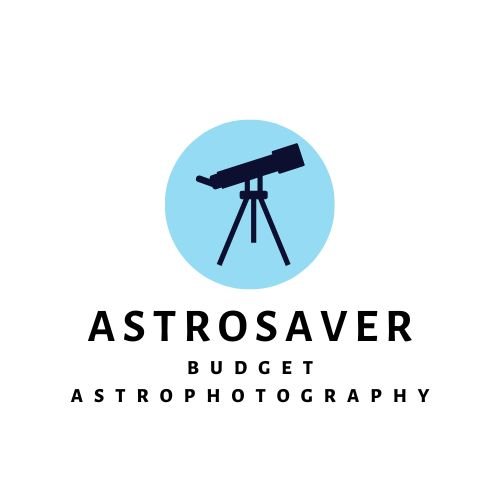
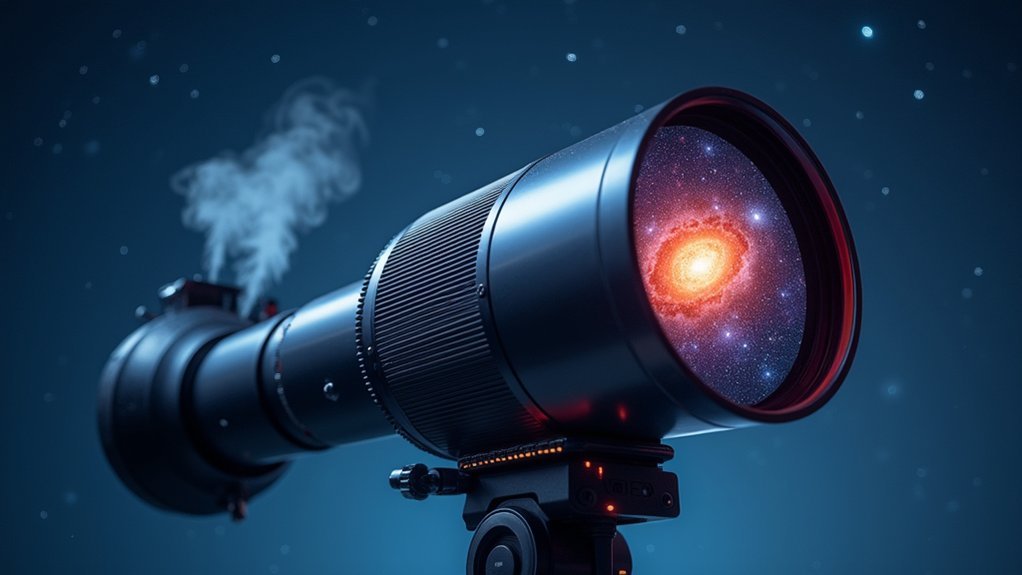
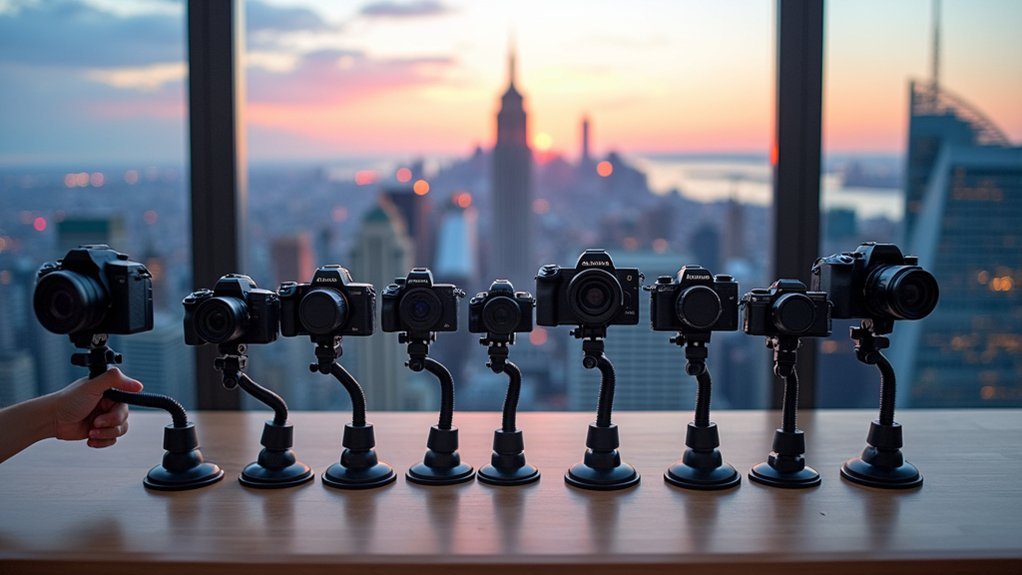
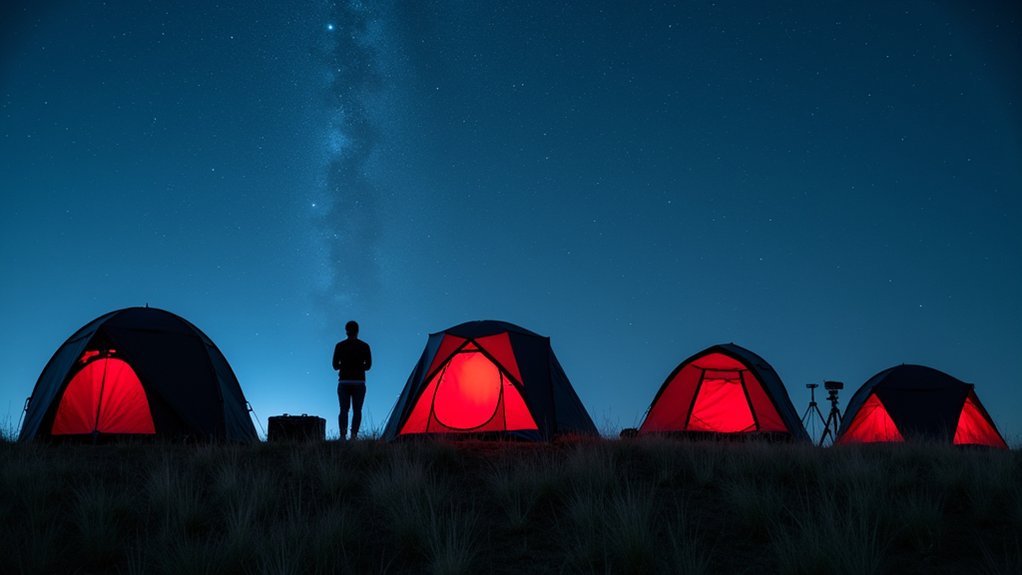
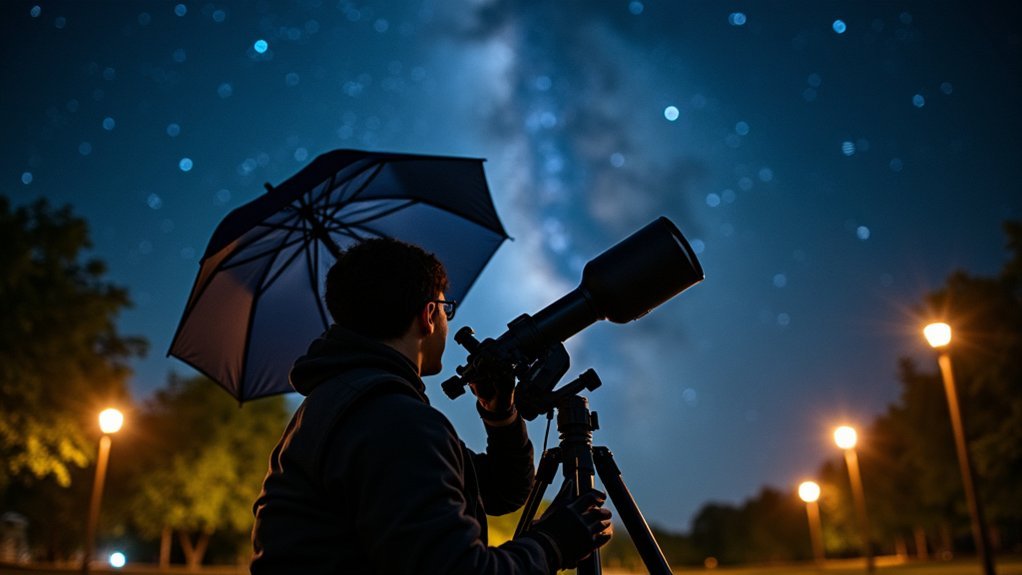
Leave a Reply